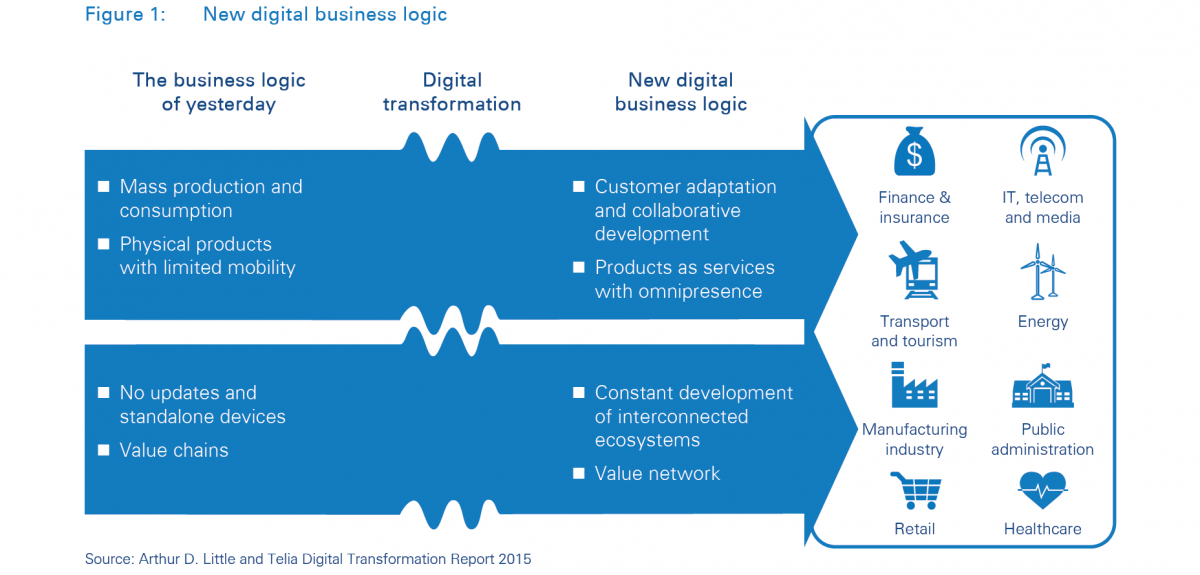
DOWNLOAD
DATE
Contact
Reshaping the workplace
Digitalization brings radical changes for all organizations, independent of industry and size. The competitive landscape is transforming, as existing business models face disruption and traditional value chains disintegrate. In their stead, new value networks are emerging, in which organizations develop products and services together with customers and partners. The result is new digital-business logic that brings significant opportunities for companies and organizations, but also requires new business models to enable new ways of working.
The workplace in transformation
The workplace, which has long been synonymous with a physical space, is undergoing a transformation driven by new behavior from both customers and employees, in combination with development of new ICT services. The digitalization of people’s private lives has contributed to
consumers now demanding individualized user experience across all channels. These demands and behaviors are increasingly transferred into the workplace. It is therefore not surprising that a new generation of employees value independence, creativity and flexibility to a greater extent. For example, a recent study by Regus found that nine out of ten employees under 30 consider work flexibility a deciding factor when choosing an employer. Another important trend is the transition to freelancing and working remotely, which is now accelerating in developed
economies. Approximately half of the American workforce is expected to be freelance in 2020, and working remotely is expected to be the norm in the UK in 2022. In 2013, more than 50 percent of Swedish companies already had employees working from home.
New ICT services, such as access to ubiquitous connectivity, new smart devices, cloud services, ID management and virtual enterprise networks are accelerating the digital transformation of the workplace. This is becoming challenging for IT departments who are required to manage organizational data security within these digital work spaces, in addition to improving efficiency of existing IT systems. The execution of the two tasks can be a costly endeavour.


